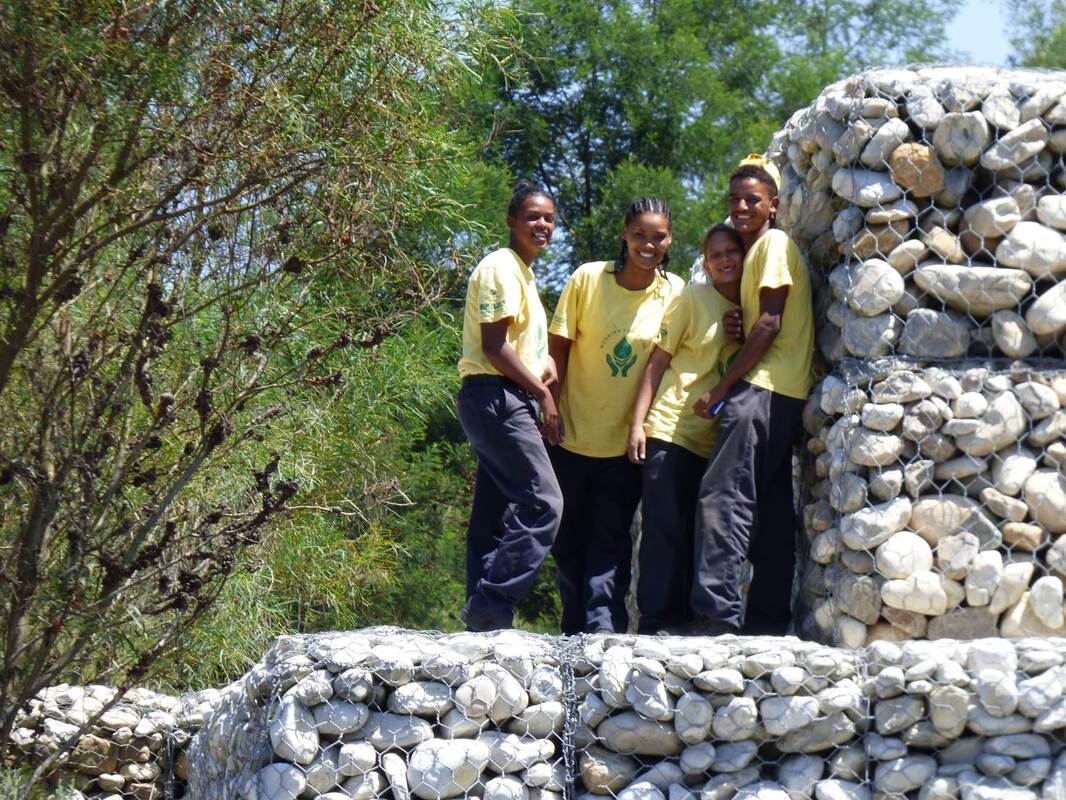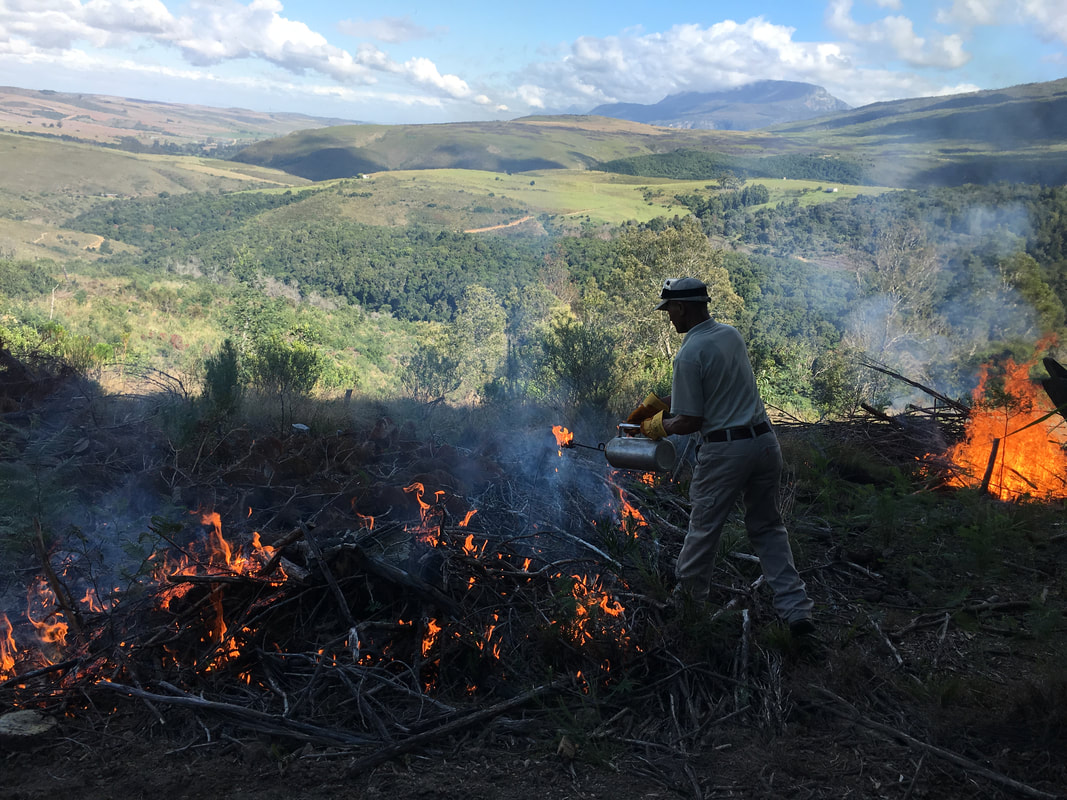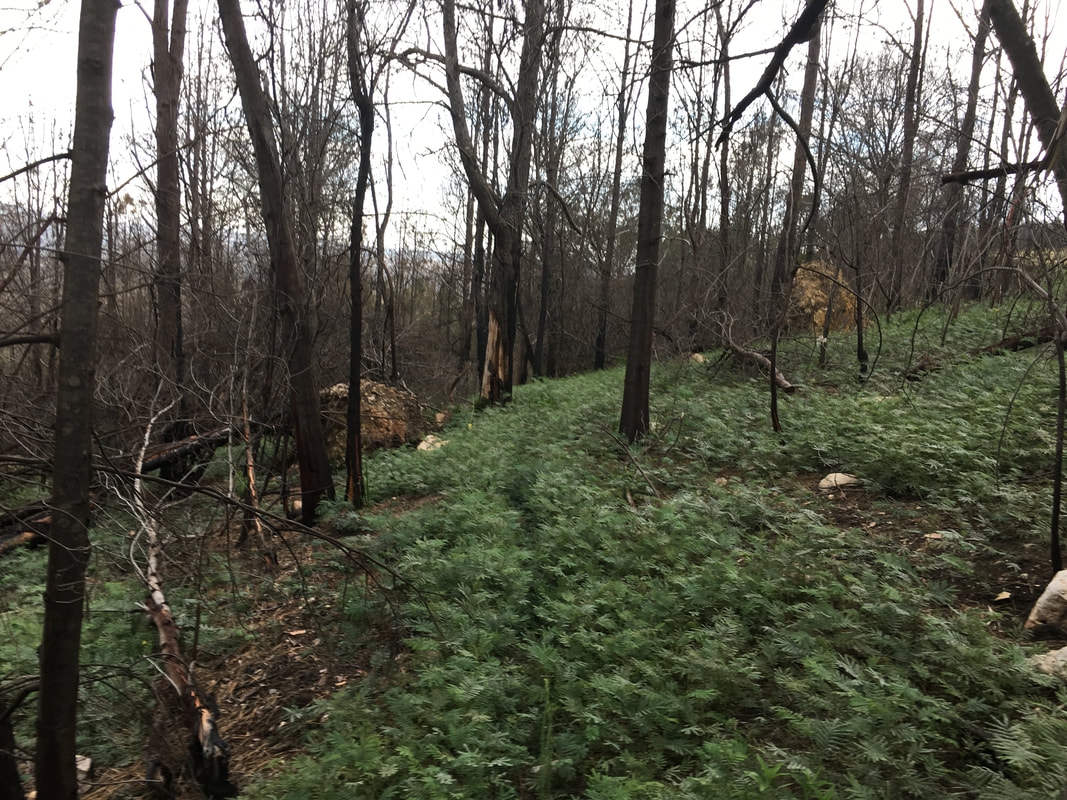|
The conservancy has several projects on the go at any one time, but the clearing of alien vegetation is the core of our operation. Our team has learnt a lot from many years of clearing alien invasive vegetation in our area. This experience has had its ups and downs, we have struggled, made mistakes, fretted, made great progress, and enjoyed successes. The longer we are in the field the better we become at our jobs and the more we learn and can share some our experiences. Below we have summarized 7 lessons learnt by our project manager, Ricardo Januarie. These lessons are derived from his experience in the Grootvadersbosch area and they may not apply to all contexts. In our area, we implement our alien clearing by contracting the work through 8 small businesses who employ teams of 11 people that are trained in different tasks required for alien clearing operations. We have a long-standing relationship with these contractors, and we work closely with them to ensure the work meets the standards required by landowners and funders. The management of these contractors and their teams is Ricardo’s key responsibility, and these are some of his lessons from many years of working in the field. #1 Follow the rules and read the instructions As a conservancy, we understand that the correct application of herbicide is crucial for effective control of invasive plants and the protection of the natural environment. For that reason, Ricardo is a certified pest control office with the correct training to ensure correct application of herbicide. He frequently emphasizes the importance of following the instructions on herbicide bottles before application. Many people believe that using more herbicide is more likely to control the invasive plants but using the correct volume of herbicide (as stipulated on the label) is always best. Using the incorrect amount does more damage to the surrounding indigenous vegetation than to the targeted alien plants. Do your research beforehand and follow the instructions! Some of his advice on herbicide application:
#2 Preparation is key Contractors do not work on very rainy or excessively hot days. This is because extreme weather impacts on the effectiveness of herbicide and the potential health implications for workers who may be in very remote locations. Contractors must therefore assess impending weather conditions before going into the field. If weather extremes are forecasted, they need to adjust their operating times to work in the hours that are best suited. Monitoring weather conditions is essential to plan workdays and to ensure the number of working hours are met, and the task is completed on time. Another important part of preparation relates to the equipment that is used. Equipment will inevitably fail; and teams need to carry extra parts and spare equipment to rectify make repairs. Issues with equipment can prevent the continuation of work and create a safety issue for those using the equipment. The team needs to be prepared to resolve any issues in field, firstly, to eliminate wasting time as machinery is necessary to complete many of their tasks, and, secondly, to the eliminate extra expense for the contractor, as they will then have to travel back to town from isolated areas to get repairs done on parts. #3 Expect the unexpected Weather forecasts are not always accurate, rain clouds may suddenly roll in, the temperature may soar, there could be an injury on site or equipment could break. A situation can change abruptly, the teams need to ensure that they are flexible, have assessed all risks in advance, and are ready to adapt to anything. Observing the second lesson (ensuring preparation) will assist in complying with this important lesson. #4 Teamwork We work with 8 Contractors who supervise teams of 11 workers. The contracts they undertake stipulate the number of days that must be worked and the size of the area that must cleared, these figures are based on the assumption that all workers will be present for the duration of the contract. There is sometimes an issue with workers not arriving at work without notice or reason (especially on Mondays and Fridays). In order to complete the task, we require that workers be replaced by another worker who has received an induction and training beforehand, so that the contractor can fulfill the criteria within the same time. In cases of genuine illness, we work with the contractor to make sure that the worker at home is paid and the team is able to complete the task. This may require the team to work longer hours or to work more efficiently. #5 Communication and support from landowners We believe that a key part of a successful clearing operation is that landowners are part of the process from the start and that they contribute to the planning and implementation. The law states that alien clearing is ultimately the landowner’s responsibility and so we need to have close communication with them from the start. In our operations, landowners contribute financially which means they are invested in the process. We need to work closely with them and this is not always easy. For example, during sowing and harvesting season landowners are especially busy in the fields and our contractors sometimes struggle to contact them. They sometimes need water to be supplied by the landowners to mix herbicide, this can be difficult when more important things are pressing on a farm. We also need landowners to inspect the work and sign off on its quality before contractors are paid. The combination of gaining authorization from busy landowners, immense paperwork in the government contracting process and multiple reporting bodies often causes delays. Patience is important for everyone involved and good communication is a key part of the process. #6 The benefits of burning Burning an area after clearing removes leftover flammable material. Burning also germinates alien species present in the seed bank. However, once they have started growing one must then remove them as quickly as possible. Fire is also important for certain vegetation types, such as fynbos. You can read more on this topic in two of our other blogs, namely the observed effects of burning alien invasive vegetation (Published on the 04/23/2020) and burning for us and the environment (Published on the 04/22/2020). The key aspect is to plan your alien clearing with fire management and a proper burning regime. #7 Do it sooner rather than later Follow-up of alien regrowth should take place as new growth begins, post initial clearing. Once an area has been cleared and burnt to stimulate germination the follow-up should take place. The longer you leave the regrowth the greater your costs, and the more time will be needed to clear. Below is a simple explanation of the various stages in growth:
We look forward to hearing your comments on our experiences and sharing more lessons we have learnt with you! You can post your comments below or email us-see all our contacts details here.
0 Comments
Your comment will be posted after it is approved.
Leave a Reply. |
AuthorGVB Conservancy Staff Archives
May 2024
Categories |



 RSS Feed
RSS Feed






